‘A body without a soul?’
Pure Ancient Masonry consists of Three Degrees and no more, including the Order of the Royal Arch
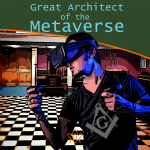
Author’s Foreword:
This series was in preparation in late Autumn 2021; however, with the Publisher Nicholas Broadway’s article Metaverse, a reconsideration was necessary:
The initial proposition of the series remains, the 1813 Act of Union defined Pure Antient Masonry as consisting of neither more nor less than Three Degrees and the Order of the Royal Arch – a four-part offering.
It is a four-part training for national and world citizenship; announced in the First Part; built upon in Parts Two and Three; and, realised in the Fourth.
Seemingly, other explanations of the four parts have served previous generations: but now, no longer.
And therefore, the purpose of this series is to explain the substance of the four parts in terms that are relevant for the twenty-first century given that experience of the world is shifting from ‘analogue’ to ‘digital’; from universe to metaverse.
This requires a re-consideration of the benefits of the four parts, their promotion and application, to ensure a resilient, sustaining, relevance for Pure Antient Masonry. (GR)

IMAGE LINKED: wikimedia Attribution 4.0 International (CC BY 4.0)
This series will include four parts:
Part 1. An entering apprentice: Building Better Communities
Part 2. A Fellow of the Craft: Building Better Knowledge
Part 3. A Master: Building Better Character
Part 4. A Companion in Oversight: Building a Better World
These building activities define the soul of the body Masonic. To be of any earthly use – relevant – freemasonries must engage with the world as it is becoming; not, as it is receding.
It must address the ‘big questions of life’.
This four-part series will consider the defining characteristics, lessons and benefits of Three Degrees and the Order of the Royal Arch, which conjoined comprises, Pure Ancient Masonry.
Semantics aside (degrees/orders/steps) Pure Antient Masonry consists of four parts.
‘Building the Temple’ is the fundamental Masonic allegory for building better people to build a better world; this must be understood as a seamless whole: why not confer each part in a Lodge opened in four stages?
Yes, this series is proposing a practical unified, unifying, theory of Three Degrees and the Royal Arch.
Pure Ancient Masonry is to be understood as a fraternal order predicated on being an enhanced form of citizenship; this as demonstrated by ‘building better’ per above.
The soul of Freemasonry resides in the exercise of these activities: we are what we do. This will be expounded within the contemporary Post Truth milieu claiming that most of what is said and done is driven by feelings/emotions; such are beyond truth – falsehood analysis.
Readers of The Square should not believe anything they are told; but not disbelieve it either!
We must cultivate respect for, and be comfortable with, ‘I do not know’. Decision-making should be based on what a good citizen would do.
‘To teach how to live without certainty, and yet without being paralyzed by hesitation, is perhaps the chief thing that philosophy, in our age, can still do for those who study it.’
– Bertrand Russell, A History of Western Philosophy.
Part 1: An Entering Apprentice, Building Better Communities.
‘…. apprenticeship was enforced throughout its history by an action of covenant in the courts, that the relations of masters and apprentices were originally a matter of private contract.
But inasmuch as apprenticeship resulted in citizenship and trading rights it was early regulated both by the City authorities and the misteries.’
– Introduction: Apprenticeship/British Histories Online
The apprentice was taught technical craftsmanship and ethical workmanship. Additionally, state-craftsmanship, interdependence and charitability as practised through guild engagement.
The successful completion of an apprenticeship resulted in the conferral of citizenship and trading rights.
The compasses of education rendered an apprentice fit for membership of regularly organised society.
These values and organisational models became the fundamentals of nascent, urban governance and freemasonries.

IMAGE LINKED: wikimedia Attribution 4.0 International (CC BY 4.0)
Perhaps after the Norman occupation, edificial building projects accelerated the formalisation of apprenticeships and guilds; their values and organisation becoming embedded within the growing urban communities.
Perhaps the word ‘guild’ indicates an ability/liability for paying tax. (Only citizens paid tax: Representation?)
Given the conferral of citizenship and trading rights, a ‘private contract’ between a Master and an apprentice became a civil undertaking within City of London governance: the Master acted in loco parentis.
Upon successfully ‘serving their time’ – not before the full age of twenty-one years – wardens granted apprentices their ‘freedom’.

IMAGE LINKED: wikimedia Attribution 4.0 International (CC BY 4.0)
Being made an apprentice, under guild jurisdiction, was as joining an order.
An ‘order’ is a group living out shared values. Being received and initiated into an order usually requires a formal, open, acceptance of its rules and values.
The sustainability of an order would require oaths / pledges / affirmations of loyalty to its constitution.
Also, given that during an apprenticeship there is a sharing of trade secrets, ‘tricks of the trade’ upon which livelihoods depended, oaths etc would have included a commitment to confidentiality. (Our misteries to keep?)
Initiation was likely to have been the most significant event, to-date, in the life of a young person and whilst formal, could have been in celebratory mode.
With initiation, lifestyle would have been mentored to ensure an assimilation of the values appropriate for citizenship; also, for protecting apprentices from the malignity of cowans, strangers and ruffians.

IMAGE LINKED: wikimedia Attribution 4.0 International (CC BY 4.0)
On being received into some freemasonries, initiates are powerfully reminded of their helpless indigence on entry into the world, totally dependent on others.
The Masonic journey is progressing from dependency to interdependency: no Master Mason can build a cathedral by himself!
It is about learning to be a team-member, contributing, leading, and managing from within a team.
Degrees and orders conferred notwithstanding, with their commitment to learning and serving, Freemasons are apprentices for life and exhorted to make daily advancement.
Everyone has duties to the community in which alone the free and full development of personality is possible
– Article 29; UN Declaration of Human Rights.
This is demonstrated with the administering of oaths, vows, and affirmations; the power of which consists in recognising and respecting the authority of those administering the oath and in respectful relationship with those who have already taken, or will take, a similar oath.
It confirms the reality of an apprentice’s interdependence; from an oath flows mutual protection and aid.
Being a civil requirement, oaths should not generate conflict of loyalty, state, religion (if established) and trading.
However, this ideal became challenged.

IMAGE LINKED: wikimedia Attribution 4.0 International (CC BY 4.0)
Did the 1688 apprentice boys of Derry have their Masters’ permission to seize the city-gate keys in rebellion against James II?

IMAGE LINKED: wikimedia Attribution 4.0 International (CC BY 4.0)
Or, in 1773 Boston, did apprentices have their Masters’ permission to be members of the ‘revolutionary’ Sons of Liberty (no tea at their festive board) and rally to the cry of Sam Adams,
‘Friends! Brethren! Countrymen!…Tyranny stares you in the face.’
(Taxation without representation?)

IMAGE LINKED: wikimedia Attribution 4.0 International (CC BY 4.0)
When the Black Death caused the population of Europe to nearly half in the fourteenth century, guilds became extended families for plague survivors.
Low life expectancy, arising from war, disease, famine, and poverty, challenged Church and State; the former was expected to lead on mitigating poverty.
With the prospect of being able to provide food, clothing, and shelter for himself, at least, an apprentice was duty-bound to practise relief.
This was leveraged by the Church, as a principal client, through the guilds to Masters for assimilation by apprentices.
Compliance was perhaps, in part, reinforced with participation in misterie plays; it is on their form that Masonic ritual is based.

IMAGE LINKED: wikimedia Attribution 4.0 International (CC BY 4.0)
When the mortality rate is high, repeated interaction alone may not sustain co-operation, and religion may play an important role in shaping economic institutions.
During the fourteenth century, when plagues decimated populations and the Church promoted the doctrine of purgatory, craft guilds that bundled together religious and occupational activities dominated manufacturing and commerce.
– Religion, Occupation, and Cooperation: The Case of the Craft Guild.G. Richardson, PhD Thesis, Department of Economics University of California, Irvine, September 2006
The unified gospel of government, religion and trading was, seemingly, ‘good news’; especially for stone-masons as competition among bishops led to building bigger ecclesiastical edifices; this empowered religious influence in and over guild undertakings. It wasn’t to last!

IMAGE LINKED: wikimedia Attribution 4.0 International (CC BY 4.0)
….legal institutions that established Europe’s first large-scale experiments in mass public education…..originated…..during the Protestant Reformation due to popular political mobilisation. Cities that formalised these institutions grew faster over the next 200 years, both by attracting and by producing more highly skilled residents.’
– Jeremiah Dittmar, Ralf R Meisenzahl; ‘Origins of growth: How state institutions forged during the Protestant Reformation drove development’. VoxEU 26 April 2016.
Luther’s Ninety-five Theses was the world’s first, printed, best-seller.
The printing press, the seminal instrument of European industrial revolution, spawned mobilisation, mass communication and wider access to learning.
With this, a single-world Venn diagram was created; increasingly, sets were being assimilated.
Shifting to metaverse will accelerate this process. How will freemasonries harness Aiocracy? (Pronounced – ‘eocracy’ – the rule of Artificial Intelligence.)
The boundaries of spheres (sets) of influence, increasingly, were becoming blurred. Accelerating through sixteenth-century Europe, the progress of Protestant Reformation and scientific methodology weakened the relationship, state, and religion.
Purgatory was less feared, ecclesiastical building downsized. The green shoots of scientific progress led to an application of technical innovation – a reformation of production, distribution, and consumption.
This tremored tectonic plates at the interface of government, religion, and science.
Whilst state, religion and trading had shared legitimacy, loyalties were undivided: this ‘holy trinity’ was to be systemically challenged.
The fate of first-century Christian martyrs was not determined by their religion per se but with a refusal to accept and/or comply with the demands of Roman citizenship.
Their citizenship was in heaven, they obeyed God rather than man.
With the European Protestant Reformation, and an enhancement of state over religion, support for Roman Catholicism was effectively projected as a first loyalty to Rome and Roman Catholic countries.
In October 2021, the French Interior Minister Gérald Darmanin advised a Christian prelate that;
‘The French Republic respects all religions from the moment they respect the Republic and the laws of the Republic’.
This was clearly setting the priority of loyalties, state vis a vis religion.
It would seem in the French secular state (laïcité) a volume of sacred law is not an acceptable alternative to the Republic’s Constitution.
Andrew Prescott writes,
‘For French freemasons arriving in Britain as refugees after 1851…Many were republicans and freethinkers, and they objected to the prominence of clergymen in English freemasonry and its support for the monarchy.’
– A Body Without a Soul? Philosophical British Freemasonry (freemasons-freemasonry.com).
Were not many of the emigre freemasons members of the Grand Orient de France with its extant Constitutional requirement to believe in God and the immortality of the soul? (Revised 1877)
British freemasonries recognised freemasonries from republican France USA.
It is not clear why Freemasons claiming asylum in Britain objected to either the Monarchy, the laws of the monarchy or the loyalty of Masons to the civil powers.
Perhaps a woke too far: Lady Marianne doth protest too much?
With increasing state organisation and the exercise of citizenship and trading rights, traditional religious authority waned.
Not so much being without relevant answers; rather, theology could not accommodate the questions arising from progress in either state-craftsmanship or scientific methodology and the latter’s technological application to production, distribution, and consumption.
But, from the middle of the nineteenth-century, this became necessary. Yet from mediaeval times, the working tools of an apprentice have remained relevant.
The twenty-four-inch gauge for measurement and apportionment of time;
the common gavel to remind of compliance with the terms of oaths and / or affirmations as square work cannot be achieved by cutting corners; and
the chisel to smooth away any notions of independence and thereby render us fit for citizenship.
In Part 2, ‘The Fellow of the Craft’: it will be demonstrated that ‘following the science’ was requisite for progress beyond apprenticeship and how this impacted on citizenship and religious loyalties.
Is ‘following the science’ – nanotechnology, robotics, and artificial intelligence – a choice?
Is evolving (or perhaps being thrust headlong) into Metaverse, random or determined and when conjoined, probable?
Will the Masonic species adapt to survive or become extinct; a fossilised body the bones of which picked over by inquisitive antiquarians?
Will ‘following the science’ be harnessed to attract and retain in, resilient, relevant, Pure Antient Masonry in a digital manifestation? Will the current analogue and the emergent digital be permitted to run concurrently in freemasonries until the former is superseded?
Further Reading: Relevent Articles
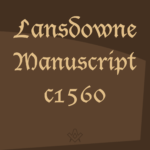
Lansdowne Manuscript c1560
A fine example of an English guild apprenticeship contract for both the apprentice and master
more….
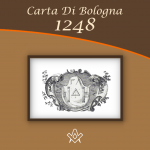
The Bologna Statutes Or Carta Di Bologna
The Bologna Statutes or Carta Di Bologna 1248 – Masonic document of Operative Masonry, the oldest one found to date.
more….

Great Architect of the Metaverse
Are you ready to meet in the metaverse ? what can you expect to see and do ?
more….
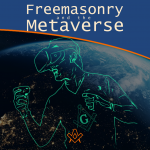
Freemasonry and the Metaverse
Some projects are starting out as Masonic art NFT collections, while others more clearly see a point in the future where they will be Freemason’s lodges operating in a metaverse.
more….
Article by: Gerald Reilly

Gerald Reilly was initiated in 1995 into St Osyth's Priory Lodge 2063. Essex. England (UGLE).
He was a founder member of Josh Heller's Allthingsmasonic, and with Josh co-wrote 'The Temple that Never Sleeps' (Cornerstone Books, 2006) he is committed to the development of e-Freemasonry.
Awarded the Norman B Spencer Prize, 2016.

The English Masonic Union of 1813
By: John Belton
The bringing together of the Antients and Moderns to form the United Grand Lodge of England in 1813 was a tricky matter.
How all this came about is not just an English tale but an Irish and Scots one as well.
Complexities concerning ‘union’ included what to do about other masonic orders, especially the Royal Arch and the Knights Templar.
For the first time ever this account provides a birds-eye view of the issues and personalities behind one of the big events of masonic history still affecting us today.
“In this pioneering and stimulating book, John Belton tells with verve and enthusiasm the story behind the events which led up to the formation of the United Grand Lodge of England in 1813. Providing completely new perspectives on this key event in the history of British Freemasonry, John’s book will be of interest not only to freemasons but to all those who are interested in the contribution of Freemasonry to British culture and society.”
– Prof Andrew Prescott, Kings College London
Recent Articles: Pure Antient Masonry
 Pure Ancient Masonry; Introduction This series will consider the defining characteristics, lessons and benefits of Three Degrees, the Order of the Royal Arch and when conjoined, Pure Ancient Masonry. |
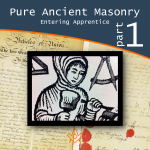 Pure Ancient Masonry; P1. An Entering Apprentice Part 1. An entering apprentice: Building Better Communities; Pure Antient Masonry consists of four parts. ‘Building the Temple’ is the fundamental Masonic allegory for building better people to build a better world |
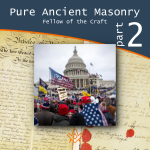 Pure Ancient Masonry; P2. A Fellow of the Craft Part 2: A Fellow of the Craft, Building Better Knowledge. Pure Antient Masonry consists of four parts. ‘Building the Temple’ is the fundamental Masonic allegory for building better people; this must be understood as a seamless whole: |
 Pure Ancient Masonry; P3. The Master, Building Better Character Part 3: The Master, Building Better Character - Being raised is a transition from knowledge to wisdom. |
 Pure Ancient Masonry; P4. A Companion in Rule, Building a better world Part 4: A Companion in Rule, Building a better world - The four parts of Pure Antient Masonry comprise the ‘body’ Masonic; they are the building blocks of the vital relevance, through enhanced citizenship, wherein the soul of Freemasonry abides. |
masonic knowledge
to be a better citizen of the world
share the square with two brothers

click image to open email app on mobile device








